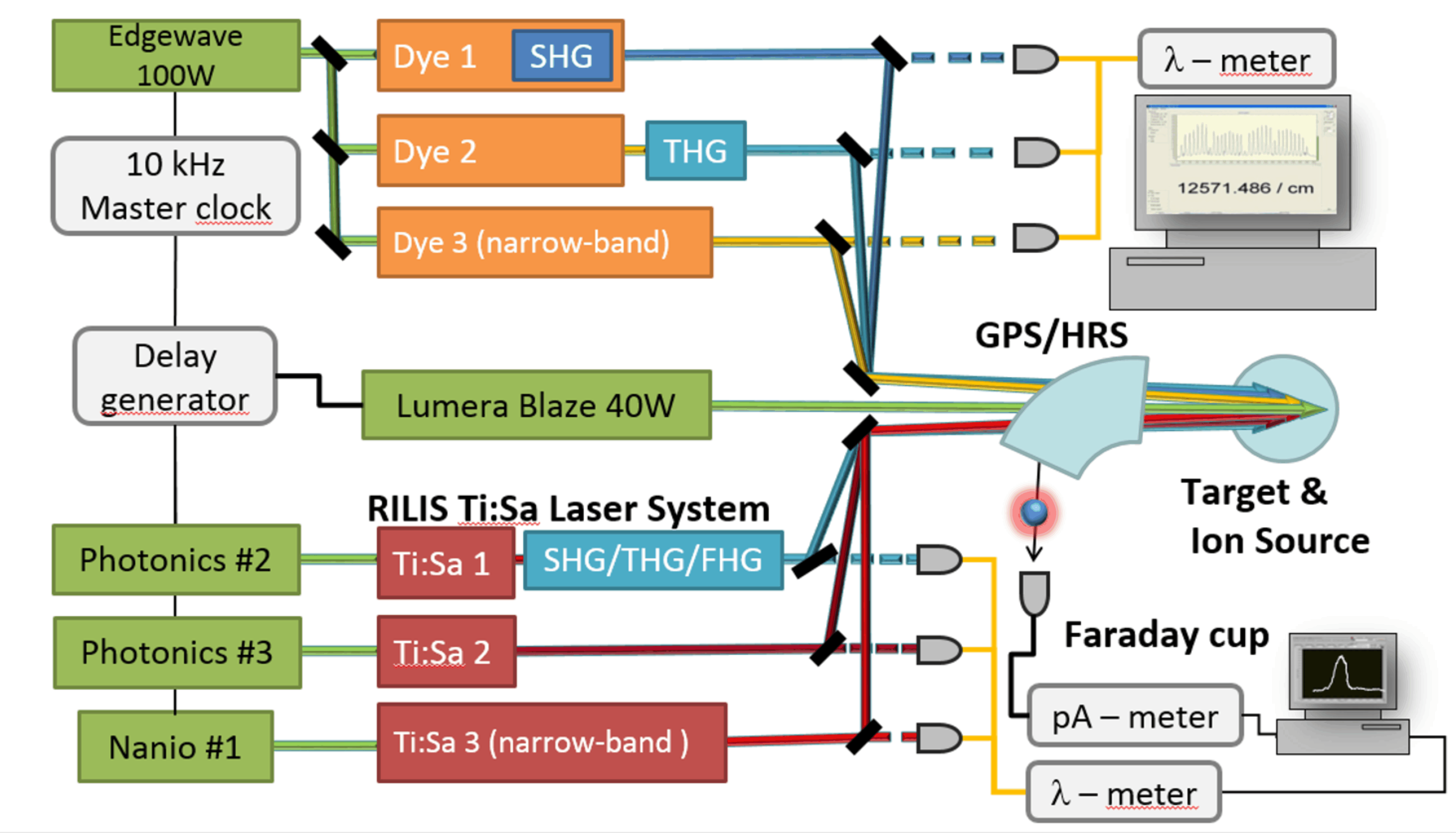
As shown above, the RILIS laser setup consists of three, Nd:Yag pumped, tunable dye lasers and three, Nd:Yag pumped, tunable Titanium:Sapphire (Ti:Sa) lasers. With the use of frequency conversion units, this gives RILIS an unbroken wavelength tuning range from 210 nm to 950 nm.
Pulsed light is used in order to increase the peak power delivered to the target. All of the pulses have to be carefully overlapped in order to maximise the ionization efficiency; this is done using a master clock and delay generator, as depicted in the figure above. The RILIS lasers produce pulsed laser light at 10 kHz. At this repetition rate all of the atoms, which continuously effuse through the ionizer cavity, would "see" at least one overlapped group of laser pulses during their drift through the ion source cavity.
| Laser (nm) | Wavelength | Repitition rate (kHz) |
Average Power [ω, 2ω, 3ω, 4ω] (W) |
Pulse length (ns) | Linewidth (GHz) | Jitter (ns) | Divergence (mrad) |
|---|---|---|---|---|---|---|---|
| Nd:Yag (Edgewave) | 355, 532 | 10 | [-,100, 20, -] | 8-11 | - | 3 | 0.2 |
| Nd:Yag (Photonics) | 532 | 5-20 | [-, 73, -, -] | 150 | - | 9.3/8 | 7.6/6.4 |
|
Credo Dye (Sirah) |
390-860 | 10 | [20, 2, 0.2, -] | 7 | 12 | - | <1 |
| Ti:Sa (CERN/Mainz) | 680-950 | 10 | [5, 1, 0.15, 0.15] | 35 | 5 | - | <1 |
| Narrow Band Dye (MSS) | 390-860 | 10 | [10, 1, 0.2, -] | 10 | 15 or 0.8 | - | <1 |
| Narrow Band Ti:Sa (CERN/Mainz) | 680-950 | 10 | [5, 1, 0.15, 0.15] | 35 | 1 | - | <1 |
More detailed information about the RILIS laser system can be found here.